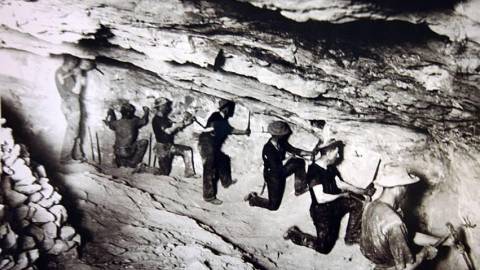
Explore the Gold Fever Trail
Posted: 06/01/24
Welcome to Gold Rush country! Take a journey into the 1860s when eager prospectors flocked to Big Bear in search of the 'mother lode'.
PDF of Gold Fever Trail Brochure
The historic 4X4 off-road Gold Fever Trail is a self-guided off-road driving tour through Holcomb Valley, the center of Big Bear's gold rush. With a little imagination you can picture the old-time miners with their gold pans in the creeks, their stamp mills in the field, their rowdy saloons and their wild nights. It was truly the Wild West!
Now off we go! And keep your eyes peeled, the mother lode of gold may just be under your nose!
Driving the Gold Fever Trail
Gold Fever Trail begins at Polique Canyon Road off of North Shore Drive. This is a journey along fire roads so be sure your vehicle has high clearance and 4-wheel/all-wheel drive. While the pamphlet includes a map, we recommended you use a GPS to follow the route.
Sites 1, 2, & 3
The first two sites are along Polique Canyon Rd. Be on the lookout for marker signs with a crossed shovel and pick-axe. Site 2 (Last Chance Placer) is missing the sign so look for a "2" to your right along 2N09 before turning onto 3N16.
Site 3 (Two Gun Bill's Saloon) calls on your imagination to bring the history to life. Pause to hear the drunken shouts and laughter, smell the spilt beer and musty tavern air, and see the rowdy crowds toasting their fortunes - or wallowing in their failed prospects.
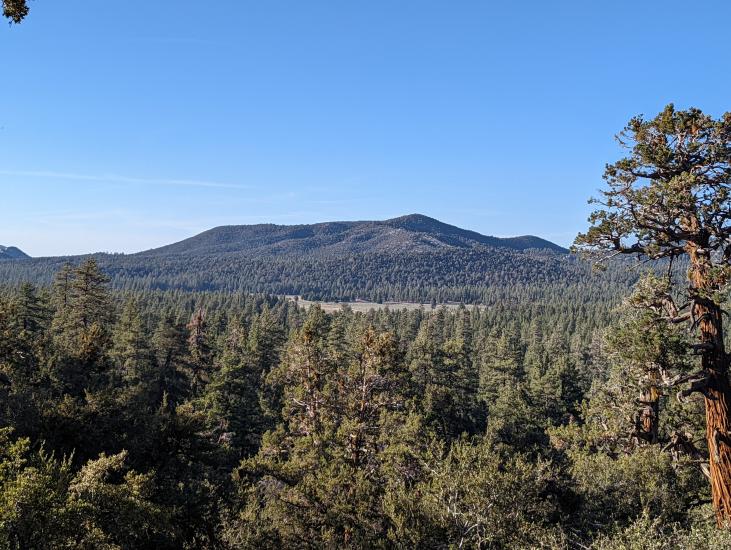
Site #1 - Holcomb Valley View Trail
Sites 4, 5, & 6
At Grasshopper Quartz Mill (Site 4) sand mounds represent the processed ore from the stamp mill that once stood. A rusted-out water pump is all that remains, but you can imagine miners working under the sun, moving the earth, and sweating for hours in the hopes of striking it rich.
Holcomb Valley's first settlement 'Belleville' was truly a Wild West town. With it came the outlaws, the claim jumpers, and the gamblers. Justice rang true to the Wild West spirit as illustrated by Hangman's Tree (Site 5). You can imagine the ominous message a hanging convict would send to anyone looking to make trouble in town.
At Site 6, see where it all began with Bill Holcomb. The area is where he first discovered gold in the valley. Envision a seasonal stream glittering with flecks of pure gold!
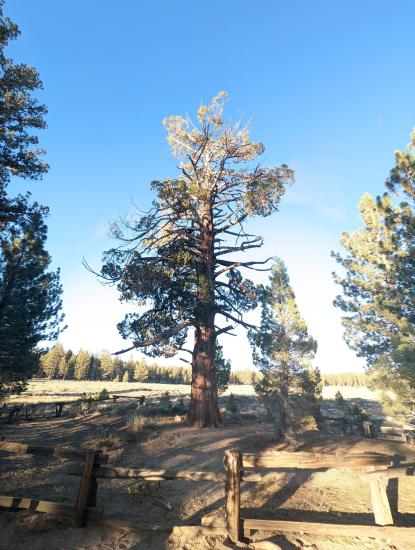
Site #5 - Hangman's Tree
Sites 7, 8, & 9
The Belleville Cabin (Site 7) is one of Big Bear's most notable landmarks. The original purpose of this structure is up to your imagination, but the style was quite common as it could be built quickly. A little walk past the cabin, you'll see Site 8 where a primitive method of grinding ore was operated under mule power. Then pay a visit - and your respects - to Ross (Site 9), whose gravesite sits at his place of death.
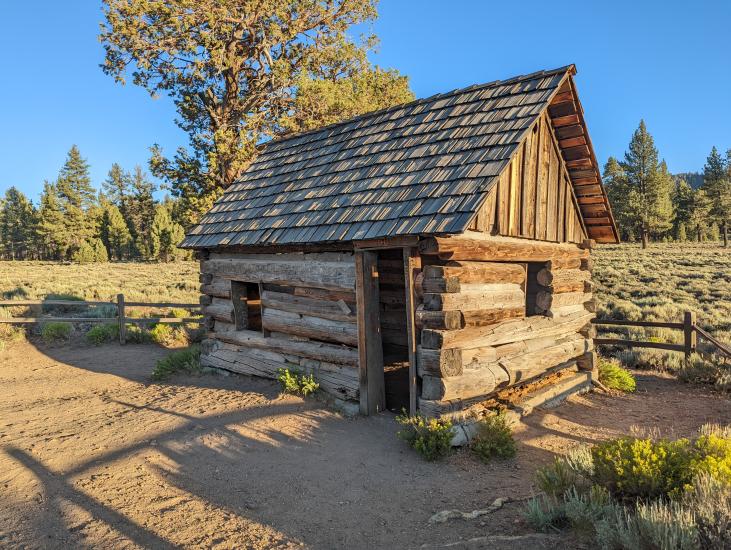
Site #7 - Belleville Cabin. In 1861, the town missed becoming the San Bernardino County Seat by two votes. The County Seat is currently in the city of San Bernardino.
Sites 10, 11, &12
Now in ruins, the Pygmy Cabin (Site 10) is somewhat mysterious in that it was only 6 feet in height. It unfortunately burned in 1983.
As mining methods transitioned, quartz was an exciting new find because it indicated the presence of gold. Metzger Mine (Site 11) and Lucky Baldwin Mine (Site 12) were both operations placed along quartz veins, the latter mine stayed in operation until 1923.
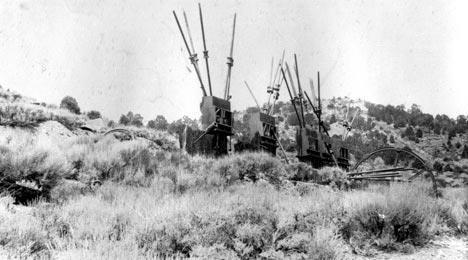
Site #12 - A 1874 stamp mill at Gold Mountain